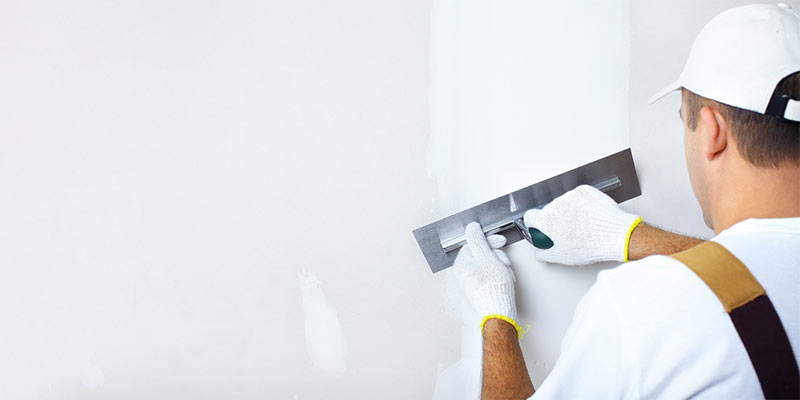
Whether you are going to do it for yourself, or for a client, it is better to brush-up your know-how of plastering. It is so because; plaster is one of the most important parts of the overall look and construction of a building. If a wall is not plastered well, paints and wallpapers will not stick properly, giving the wall a very ugly look. A badly done plaster may also cause serious injury if it falls on someone. So, here are some tips that can help you get the technique of plastering well.
Know how to prepare the right plaster mix – The first step that comes to mind while talking about plastering is the preparation of plaster mix. It may seem a very easy task but it actually is not as easy as mixing cement powder and water.
Whenever you are going to mix plaster and water remember to add plaster to the water and not water to the plaster. The plaster and water roughly go in 1:1 ratio this means if you want a bucket of plaster mix half bucket of water would be sufficient. Take a half bucket of water and pour plaster to make a small heap. Mix the two well as not to create any lump and then keep adding a small amount of plaster.
You can use mixer drill or a wooden stick to mix water and plaster. The small technique to check for the consistency of plaster is to poke a stick in it. If the stick can stand the mixture has been created in the right proportion.
Prepare the wall to be plastered – Preparing the wall is as important as preparing the plaster mix. If, the wall is not prepared well the plaster may not stick or may dry and fall off too quickly. The first step in preparing the wall is cleaning its surface. You will need to remove wallpapers, dust or existing plaster.
When you are sure that the wall is clean and ready to be plastered you should check the suction of the wall.
High suction walls will soak up moisture too quickly from the plaster. When moisture is not retained in the plaster it will dry too quickly and fall off. To handle this situation you need to wet the wall before starting plastering. When water starts pouring down from the wall then it is ready to be plastered.
If the surface is low suction e.g. painted walls then also you need some preparations. To plaster low suction surfaces like a previously painted or plastered surface, you’ll need to treat the wall with a bonding agent, which can make the new plaster stick to the surface. To create the perfect bonding agent you can mix PVA adhesive with water and a handful of sand. You’ll need to apply the mixture before applying the plaster.
Get equipped with the right type of tools – Before starting the procedure you need to make sure you are equipped with the right tools and equipment. You might only think of basic equipment like bucket and trowel. But there are other tools too without which you won’t be able to finish your work.
As for example, you should collect information like how and why use movement beads for plastering. You should have the knowledge that you won’t be able to plaster external edges, window edges or boxed-in pipes without using a plastering bead. You should know how to cut those beads to the proper size.
If you need to plaster high walls and ceilings you should be equipped with stilts and scaffoldings. And, never forget to make a list of small equipment that can always slip off the mind. You should never miss small tools like tin-snips, sandpapers, metal ruler etc. In addition to having the right tools, you should also focus on having them in the right condition. Always keep your tools clean and ready to work.
These tips will help you in plastering your wall well. But, always remember while doing such hazardous and risky works, that your safety is very important. Do the work you feel like doing but without risking yourself to any danger. Always use rubber gloves while plastering. When you are plastering ceiling or high walls make sure to you give your eyes double protection. While doing the ceiling you will also need some head protection. If you are plastering a room with floors already tiled, then also use some safety cover for the floor. Dried up plasters are very tough to remove and they can spoil any surface.
